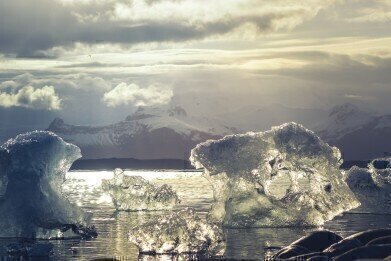Environmental Laboratory
What is the 'White Wanderer'?
Jul 23 2017
Perhaps the most famous iceberg in history is the one which struck the doomed ship Titanic in 1912 and claimed the lives of more than 1,500 people – but in relative terms, that was tiny in comparison to some of the huge behemoths out there.
One such monster, nicknamed the “White Wanderer”, is currently poised to break away from the Antarctic Peninsula. Believed to be roughly 6,000km2 (3,750 square miles) in size, the iceberg is bigger than the entirety of Wales and is only being held in place by the thin and fragile Larsen C ice shelf.
By the numbers
Scientists from across the UK have used Cryosat, a satellite belonging to the European Space Agency (ESA), to monitor the hulking ice giant from space. The satellite is able to take readings of the “freeboard” (the part sticking out of the water) and from that, calculate the size of the “draft” (the submerged part, which is far larger).
The freeboard has been found to have ice sticking up to heights of 30m, with an average total density of 190m, reaching to 210m in its thickest places. That works out to an estimated 1,155km3 of ice in total, covering an area four times the size of Greater London and over half the size of Hawaii.
“What the current Larsen situation has highlighted is that we're now able to monitor the situation with a frequency we've never had before,” explained Dr Anna Hogg, a scientist at the University of Leeds. “We can get pictures from the two Sentinel-1 satellites in about half an hour of them being acquired. The satellites we have now are revolutionising our study of the polar regions.”
Where is it headed?
From its size and dimensions, the scientists are able to make educated guesses about which direction it might take after it has split from the Antarctic Peninsula. The berg will initially slide down the coastal slope under its own immense weight – though not in a straight line.
Due to the Coriolis force exerted by the pull of the Earth’s rotation, the berg is expected to veer to the left in its journey into the Weddell Sea. Providing it doesn’t become marooned by digging into the sea floor, it will bump along the north coast of the Peninsula and very slowly eastwards into the South Atlantic Ocean.
It’s possible that it may pass by South Georgia (a British Overseas Territory) in several years’ time, so slow will its progress be. However, it’s not expected that the iceberg will interfere with any major shipping lines.
Fun facts about icebergs
- To qualify as an iceberg, it must be over 500 square miles in size
- Smaller blocks of ice are named “bergy bits” or “growlers”
- The ice in the Antarctic is so cold and so dense in places that it’s capable of cryogenically freezing lifeforms (such as moss) for over 1,500 years – after which time they can be brought back to life!
- Icebergs are named by the US National Ice Centre, which divides the Antarctic into four quarters and attributes a letter to each, followed by the next number in the sequence
- Icebergs can sing!
- British astronaut Tim Peake recently captured an iceberg from space using an SLR camera (normally impossible due to extensive cloud cover)
Digital Edition
IET 34.2 March 2024
March 2024
Gas Detection - Biogas batch fermentation system for laboratory use with automatic gas analysis in real time Water/Wastewater - Upcycling sensors for sustainable nature management - Prist...
View all digital editions
Events
Apr 17 2024 Guadalajara, Nexico
Apr 18 2024 Shanghai, China
Apr 22 2024 Hannover, Germany
Apr 22 2024 Marrakech, Morroco
Apr 23 2024 Kuala Lumpur, Malaysia


















